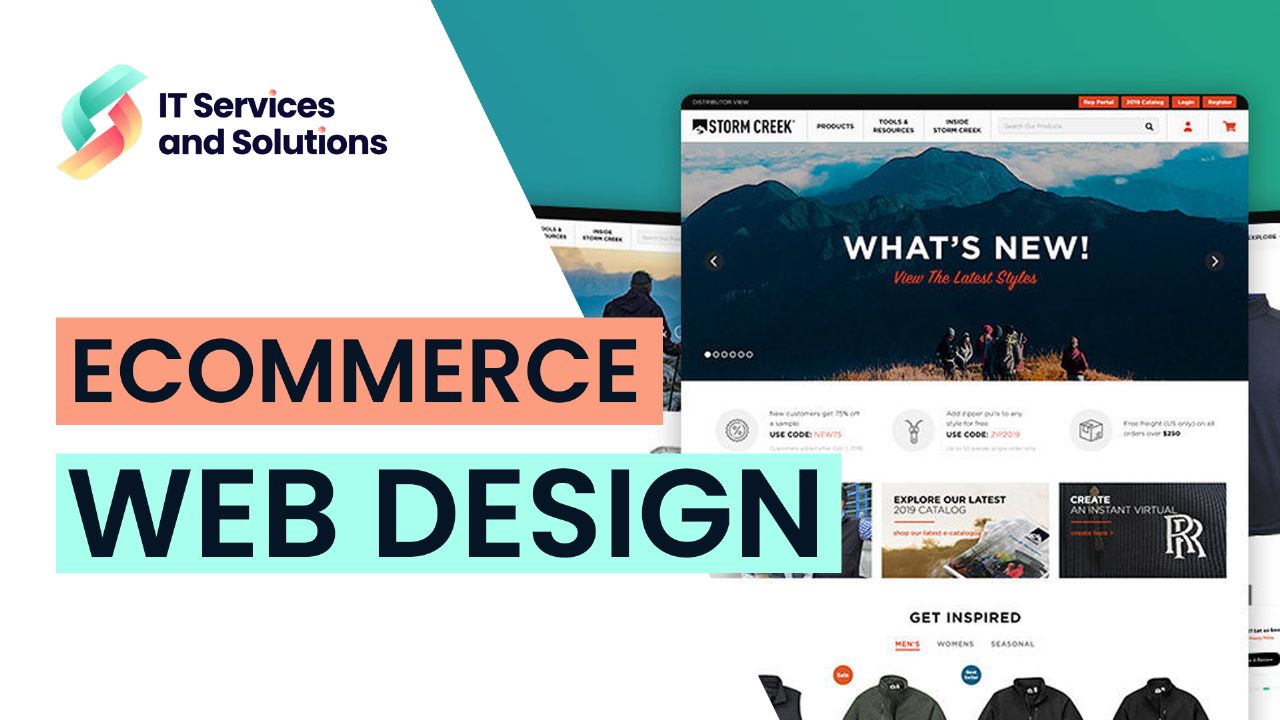Are you looking to discover the inner workings and significance of ecommerce web design? In this fast-paced world of online retail, catching the attention of your potential customers is the key to success. Whether you’re an established brand or a new entrepreneur, your online presence is a reflection of your business, and it’s important to leave a good impression.
Your ecommerce website can open the door to a delightful shopping experience with carefully chosen design elements, smooth directions, and clear user interfaces. It’s not just about selling products; it’s about creating an immersive environment that engages, inspires, and converts visitors into loyal customers. Ecommerce web design creates a positive first impression on visitors, establishing trust and credibility for your brand.
What is an Ecommerce Website?
It refers to creating and designing websites that specifically work for online businesses engaged in selling products or services over the Internet. It focuses on developing an attractive and user-friendly interface that not only effectively showcases the products or services but also provides a simple and better shopping experience.
Key points included in ecommerce web design include the following:
1- User Experience (UX)
User experience is the top priority in this which includes intuitive navigation, and smooth browsing to ensure visitors can easily find and purchase products or avail services. It also includes responsive web design for different devices such as tablets, laptops, and smartphones.
2- Visual Design
To build a website that is aesthetically pleasing accurately represents the business, and leaves visitors with a positive impression. To create the best visual design one should choose a suitable color scheme, font, and images that align with the brand’s style and target audience.
How Do Ecommerce Websites Work?
Ecommerce websites provide a convenient platform for customers to do online shopping and make purchases while at home or on the go. Here’s a step-by-step overview of how it usually works:
- Customers visit ecommerce websites to explore a variety of products and services. They browse different categories to find goods of their interest such as search tools to find specific products based on their preferences., or rely on products shown by default on the website.
- Once customers find products they are interested in, they can view detailed product descriptions, images, and specifications. They have the chance to contrast several items based on features, cost, reviews, and other relevant information. This allows customers to make convenient decisions and choose the item that best fits their requirements.
- Customers can add items to their shopping carts after selecting them. They can review the contents of their cart, change the quantities, or remove items if required. The cart lists the things you’ve chosen along with their prices.
- Once the customers are ready to proceed with their purchase they can start the checkout process. This includes the shipment method, billing information, and choosing the payment method. Ecommerce web design frequently includes a variety of payment options, including bank transfers, credit/debit cards, and digital wallets.
- After completing the checkout process, customers receive an order confirmation that acknowledges the successful placement of their order. This confirmation typically includes details such as the order number, breakdown of the products that were ordered, shipping details, and estimated delivery dates.
- Ecommerce web design also includes customer support features like live chat, email support, or help centers to assist clients with their queries, issues, and concerns. They can get assistance with order tracking, return and replacement policies, or any other queries.
Building Ecommerce Web Design
Creating an ecommerce web design involves several essential steps to ensure a visually appealing, user-friendly, and effective online shopping experience.
1- Identifying Goals and Requirements
To build an ecommerce website start by understanding your business goals, target audience, and the products or services you will be offering. Determine the specific requirements for your website, such as the number of product categories, payment gateways, shipping options, and any additional functionalities you may need.
2- Choose Your Website’s Structure and Ecommerce Template
Create a website structure that is simple to understand and categorize your products or services into suitable sections. Consider creating a sitemap to visualize the navigation flow and ensure easy access to different sections of the website.
Select a suitable e-commerce platform that fits with your business’s requirements and budget. Popular options include WordPress, Shopify, Magento, and Big Commerce. These platforms provide pre-built templates and integrated e-commerce features to simplify the design and development process.
3- Develop the Frontend and Design User Interface
To code the front-end elements of your e-commerce website, use HTML, CSS, and JavaScript. This includes creating responsive layouts that adapt to different screen sizes and devices, implementing navigation menus, and product detail pages.
Plan the visual design and user experience of your website using wireframes or prototypes. Ensure that your design that reflects your brand’s identity and attracts your target market. Pay attention to color schemes and overall aesthetics.
4- Take Care of Security Measures
Put security measures in place to protect clients’ information and ensure secure transactions. Use SSL encryption for secure connections, comply with PCI-DSS standards for payment security, and update your website’s security patches and software on a regular basis.
What to do next?
A well-designed and user-friendly ecommerce web design can attract customers, showcase your products or services effectively, and provide a seamless shopping experience that encourages conversions. The significance of ecommerce web design lies in its ability to create a visually captivating, user-friendly, and trustworthy online shopping experience. Following everything discussed in this article can help you meet your business needs and delight your customers.
So, ready to take your online business to another level? Our team of experts in ITSNS is here to provide the best services for your website. Either you’re starting from scratch or seeking to update your existing online store. We have got you covered. Get started on your path to online success by contacting us right away!

